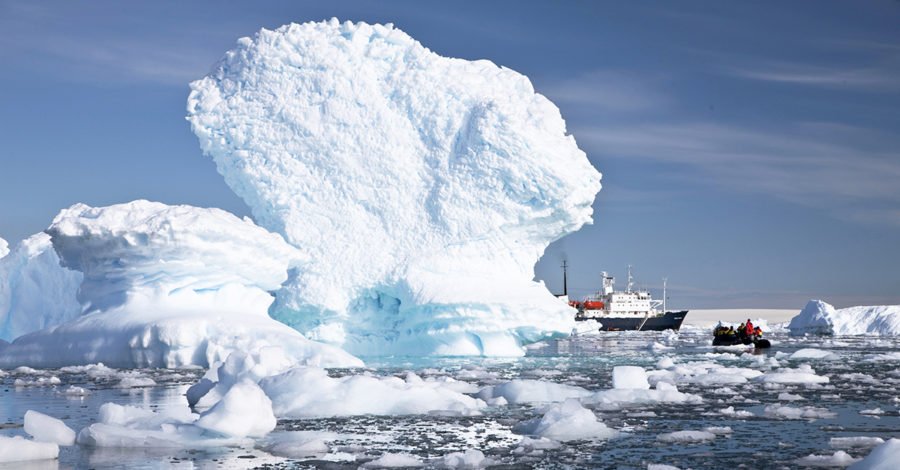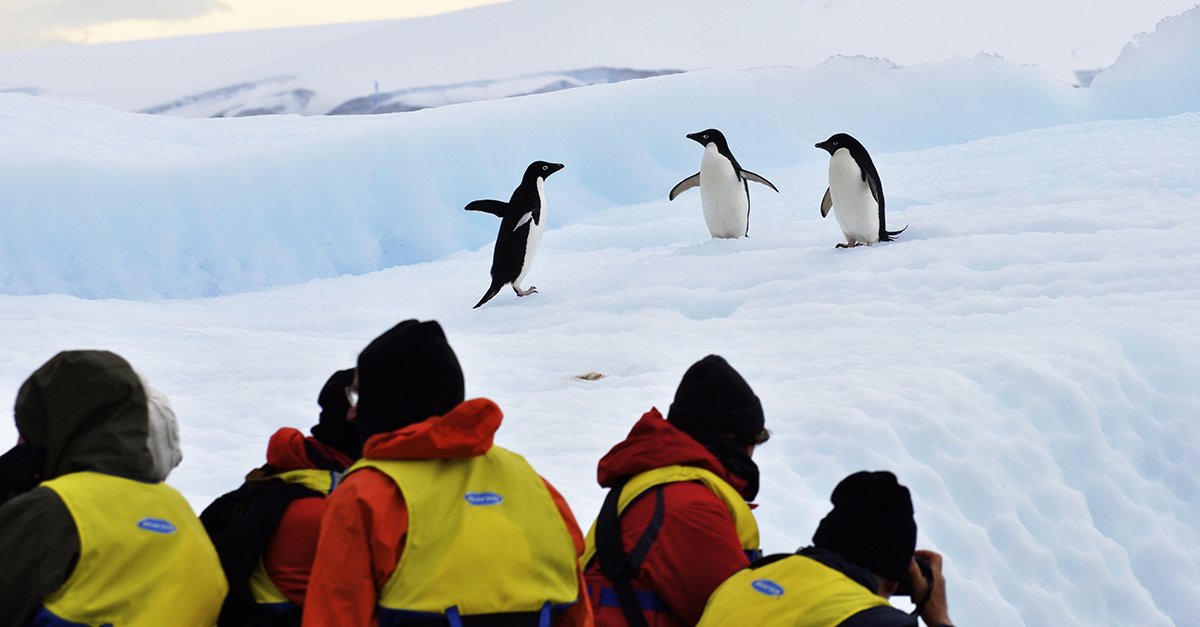Southern Ocean Safari

IN AN INCREASINGLY hectic and overcrowded world, true wilderness destinations are rare. Where on Earth can you travel and find that the impact of the human hand is all but invisible? Where, in the space of fewer than three glorious summer weeks, can you and a small group of your wide-eyed shipmates marvel at ice-clad peaks rising sheer from the sea or be overwhelmed by the sight of vast congregations of wildlife crowding untrammelled beaches? Where can you travel the same routes as the heroic explorers of a century ago, such as Sir Ernest Shackleton and Frank Hurley, and see the splendours of nature just as they would have first glimpsed them?
Such an adventure can be found in the expanse of ocean beyond Tierra del Fuego, the southernmost tip of South America. From here, modern-day travellers can experience the iceberg- strewn Weddell Sea, the mountainous Antarctic Peninsula, and the outlying islands of the region: South Georgia and Elephant Island. It’s a journey that will see you accompanied by soaring seabirds, most notably that unrivalled monarch of the skies – the wandering albatross, which has the widest wingspan of any species alive today. And you will cross paths with migrating humpback whales that have come to devour tonnes of krill over summer – one of the largest of all animals gorging on one of the smallest.

Passengers will have the chance to cross South Georgia, where sightings of humpback whales are an awesome spectacle. (Image: Greg Kraushaar)
Taking a voyage southwards to the Antarctic Peninsula from the port of Ushuaia on Argentina’s side of Tierra del Fuego is to take a journey of ecological progression. The Peninsula is an extension of the Andes and forms a northward sweeping tail from the frozen continent. Here, terrestrial life all but vanishes in the cold, although mosses, lichens, and a few grasses cling to existence. But don’t be fooled – what appears barren and lifeless above the surface only belies some of Earth’s richest marine ecosystems below the waves. Whales, penguins and seals all feast throughout the summer on that keystone species, the tiny Antarctic krill.
Moving still further south, the Weddell Sea shows you more of the raw, forbidding face of Antarctica. The Weddell’s surface is littered with sheer-sided tabular bergs, the giant flotsam from the floating ice shelves of its inaccessible western and southern
margins. By now you are facing the ‘real’ Antarctica, if there is such a thing. The Weddell’s slowly moving maze has ensnared more than one vessel since men – foolhardy, brave and fanatically determined – began to probe its icy treachery in the early 19th century. You might pass Paulet Island where the crew of Swedish explorer Otto Nordenskjöld’s wrecked ship Antarctic sought refuge in 1903, and of course you will be in the region where Shackleton’s famous Endurance was trapped by ice, then crushed, and finally consigned to the deep back in November 1915.

Zodiacs ferry keen passengers to shore for the opportunity to view wildlife such as Adélie penguins up close. (Image: Tony Gordon)
But have no fear. In 2017 the Australian Geographic Society’s expedition with Aurora Expeditions aboard the ice-strengthened Polar Pioneer, with her electronic navigational aids and satellite-generated ice charts, will steer clear of entrapment and then have you journeying north to Elephant Island – another place of homage in the retracing of Shackleton’s tale of survival. A more forbidding refuge seems impossible to imagine, but it was here that 22 of Shackleton’s crew eked out a miserable existence through the winter of 1916. They all lived to tell the tale.
Onwards on your ecological journey, the next stop is South Georgia. Although still with one foot in the freezer, this island is somehow gentler than its true Antarctic cousins, with its lower slopes swathed in unexpected patches of extravagant green.
And if there was to be a ‘hotspot’ of productivity in the cold waters of the south, then the seas around South Georgia are it, supporting abundant wildlife. Populations of elephant and fur seals, penguins and numerous other seabird species all need land – not for foraging or hunting, but simply for breeding success. The beaches and glacial flats of the island are prime real estate in the quest for survival. From breeding colonies of king penguins, whose populations rival those of small cities, to beach-front struggles for dominance among those three-tonne lumbering giants of the pinniped world, the male elephant seal – the coastal margins of South Georgia are like an enormous free-range zoo.
There’s human history aplenty here as well. Shackleton’s saga concluded among South Georgia’s mountains, and its harbours still show the evidence of a time when whales were seen as simply a resource to exploit. Thankfully, they are now nature’s prime drawcard on your ultimate voyage of personal discovery.
Travel with us
In March 2017 the AG Society will partner with Aurora Expeditions for a special voyage to South Georgia and the Antarctic to mark 100 years since the conclusion of Sir Ernest Shackleton’s epic adventure in 1916.
This will commemorate his famous journey across South Georgia to rescue crew stranded on Elephant Island. We’ll follow his route, offering a small group the chance to walk in his footsteps. You will be led by a team of expert guides, naturalists and historians, who will interpret the wildlife and history of this remarkable destination.
Click here to find out more and book your tickets today.

